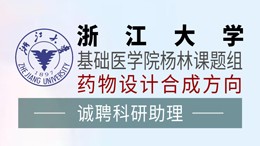当前位置:
X-MOL 学术
›
Int. Urogynecol. J.
›
论文详情
Our official English website, www.x-mol.net, welcomes your
feedback! (Note: you will need to create a separate account there.)
Long-term mesh complications and reoperation after laparoscopic mesh sacrohysteropexy: a cross-sectional study
International Urogynecology Journal ( IF 1.8 ) Pub Date : 2020-07-03 , DOI: 10.1007/s00192-020-04396-0
Matthew L Izett-Kay 1, 2 , Dana Aldabeeb 2 , Anthony S Kupelian 1 , Rufus Cartwright 3 , Alfred S Cutner 1 , Simon Jackson 3 , Natalia Price 3 , Arvind Vashisht 1, 2
International Urogynecology Journal ( IF 1.8 ) Pub Date : 2020-07-03 , DOI: 10.1007/s00192-020-04396-0
Matthew L Izett-Kay 1, 2 , Dana Aldabeeb 2 , Anthony S Kupelian 1 , Rufus Cartwright 3 , Alfred S Cutner 1 , Simon Jackson 3 , Natalia Price 3 , Arvind Vashisht 1, 2
Affiliation
Introduction and hypothesis The paucity of long-term safety and efficacy data to support laparoscopic mesh sacrohysteropexy is noteworthy given concerns about the use of polypropylene mesh in pelvic floor surgery. This study is aimed at determining the incidence of mesh-associated complications and reoperation following this procedure. Methods This was a cross-sectional postal questionnaire study of women who underwent laparoscopic mesh sacrohysteropexy between 2010 and 2018. Potential participants were identified from surgical databases of five surgeons at two tertiary urogynaecology centres in the UK. The primary outcome was patient-reported mesh complication requiring removal of hysteropexy mesh. Secondary outcomes included other mesh-associated complications, reoperation rates and Patient Global Impression of Improvement (PGI-I) in prolapse symptoms. Descriptive statistics and Kaplan–Meier survival analyses were used. Results Of 1,766 eligible participants, 1,121 women responded (response proportion 63.5%), at a median follow-up of 46 months. The incidence of mesh complications requiring removal of hysteropexy mesh was 0.4% (4 out of 1,121). The rate of chronic pain service use was 1.8%, and newly diagnosed systemic autoimmune disorders was 5.8%. The rate of reoperation for apical prolapse was 3.7%, and for any form of pelvic organ prolapse it was 13.6%. For PGI-I, 81.4% of patients were “much better” or “very much better”. Conclusions Laparoscopic mesh sacrohysteropexy has a low incidence of reoperation for mesh complications and apical prolapse, and a high rate of patient-reported improvement in prolapse symptoms. With appropriate clinical governance measures, the procedure offers an alternative to vaginal hysterectomy with apical suspension. However, long-term comparative studies are still required.
中文翻译:

腹腔镜补片骶子宫固定术后的长期补片并发症和再次手术:横断面研究
引言和假设鉴于对在盆底手术中使用聚丙烯网片的担忧,值得注意的是,缺乏支持腹腔镜网片骶子宫固定术的长期安全性和有效性数据。本研究旨在确定补片相关并发症的发生率以及手术后的再次手术。方法 这是一项针对 2010 年至 2018 年间接受腹腔镜网状子宫骶骨固定术的女性的横断面邮寄问卷研究。潜在参与者是从英国两个三级泌尿妇科中心的五名外科医生的手术数据库中确定的。主要结果是患者报告的补片并发症,需要移除子宫固定补片。次要结局包括其他与补片相关的并发症、再次手术率和脱垂症状的患者总体改善印象(PGI-I)。使用描述性统计和卡普兰-迈耶生存分析。结果 在 1,766 名符合资格的参与者中,有 1,121 名女性做出了回应(回应比例为 63.5%),中位随访时间为 46 个月。需要移除子宫固定网片的网片并发症的发生率为 0.4%(1,121 例中有 4 例)。慢性疼痛服务使用率为 1.8%,新诊断的系统性自身免疫性疾病为 5.8%。心尖脱垂的再次手术率为 3.7%,任何形式的盆腔器官脱垂的再次手术率为 13.6%。对于 PGI-I,81.4% 的患者“好多了”或“非常好”。结论 腹腔镜子宫网片骶管固定术因网片并发症和根尖脱垂再次手术的发生率较低,且患者报告的脱垂症状改善率较高。通过适当的临床治理措施,该手术提供了根尖悬吊阴道子宫切除术的替代方案。 但仍需要长期的比较研究。
更新日期:2020-07-03
中文翻译:

腹腔镜补片骶子宫固定术后的长期补片并发症和再次手术:横断面研究
引言和假设鉴于对在盆底手术中使用聚丙烯网片的担忧,值得注意的是,缺乏支持腹腔镜网片骶子宫固定术的长期安全性和有效性数据。本研究旨在确定补片相关并发症的发生率以及手术后的再次手术。方法 这是一项针对 2010 年至 2018 年间接受腹腔镜网状子宫骶骨固定术的女性的横断面邮寄问卷研究。潜在参与者是从英国两个三级泌尿妇科中心的五名外科医生的手术数据库中确定的。主要结果是患者报告的补片并发症,需要移除子宫固定补片。次要结局包括其他与补片相关的并发症、再次手术率和脱垂症状的患者总体改善印象(PGI-I)。使用描述性统计和卡普兰-迈耶生存分析。结果 在 1,766 名符合资格的参与者中,有 1,121 名女性做出了回应(回应比例为 63.5%),中位随访时间为 46 个月。需要移除子宫固定网片的网片并发症的发生率为 0.4%(1,121 例中有 4 例)。慢性疼痛服务使用率为 1.8%,新诊断的系统性自身免疫性疾病为 5.8%。心尖脱垂的再次手术率为 3.7%,任何形式的盆腔器官脱垂的再次手术率为 13.6%。对于 PGI-I,81.4% 的患者“好多了”或“非常好”。结论 腹腔镜子宫网片骶管固定术因网片并发症和根尖脱垂再次手术的发生率较低,且患者报告的脱垂症状改善率较高。通过适当的临床治理措施,该手术提供了根尖悬吊阴道子宫切除术的替代方案。 但仍需要长期的比较研究。

































 京公网安备 11010802027423号
京公网安备 11010802027423号